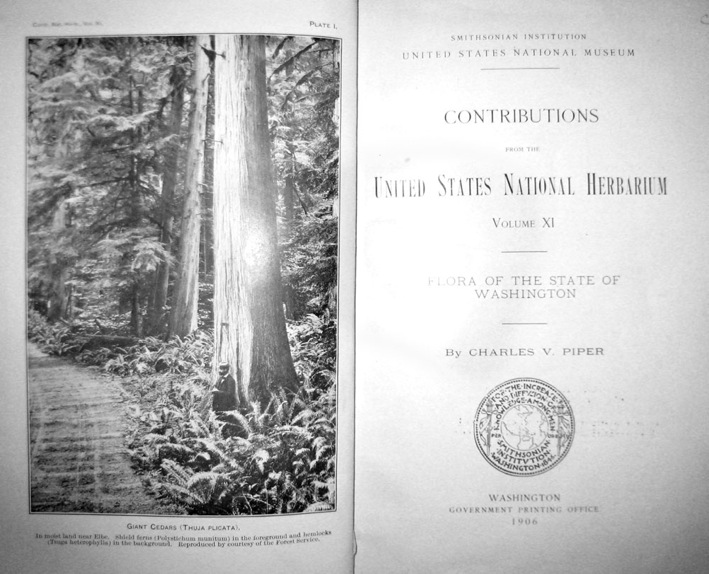
|
Charles Piper, early Seattle botanist
|
| Seattle is lucky when it comes to its plant life. Our city has
exceptionally diverse habitats and exposures, numerous parks and greenbelts.
The climate is generally moderate and --as recently exemplified by our
widespread flooding and landslides-- excitingly playful. Anyone attuned
to natural history, even Emerald City newcomers, can quickly learn
to appreciate our plant life. So gardeners are happy, as are students of
native wild vegetation. |
| What's not at all well known, however, is that Seattle may have
an almost unparalleled degree of historic plant records. And this is due
to pioneering botanists. A botanist is a serious student of plants, just like
a zoologist is of animals. Botanists typically make checklists of plants
seen growing wild. Some botanists go further, by taking a
specimen of each plant, squishing and drying it, then mounting it on a sturdy sheet
of paper, for preservation and study. These sheets of mounted plant
material are called herbarium sheets, and are shelved in herbaria, equivalent
to books in a library, or artifacts in a museum. |
| More than 160 people have contributed Seattle-collected
herbarium specimens to the University of Washington Herbarium. I have
spent many days gently going through these sheets, making a detailed
record of what plants were found growing wild in Seattle over the years. This
job is taking much time, as more than 1,000 different kinds of plants
are involved. So far the champion contributor of herbarium sheets is
Charles Vancouver Piper. He might have deposited more collections all
by himself, I think, than everyone else put together. Born in 1867, his
first collections were made in 1883 when he was 17. Apparently he was
the most active member of the Young Naturalist's Society of Seattle
which flourished from 1879 to the 1905. Some of the plants Piper found
are amazingly rare, and have been scarcely found since in the whole state.
For example, Hypericum majus, a St. John's-wort cousin wild at Green
Lake in July of 1891. |
| Piper's work in Seattle seems to have substantially stopped
around 1898. Then he headed east, and as a career botanist wrote books such
as the Flora of the State of Washington (1906), and
Flora of the Northwest Coast (1915). He died in 1926. Thanks to his efforts, and those of
many others who didn't contribute so many specimens, all of us today
who wish to know about the history of Seattle's plants, benefit. This is
Piper's lasting value. He is also commemorated in the names of various
plants, such as Anemone Piperi, Campanula
Piperi, Salix Piperi, etc. I am inclined to dedicate to him my book about wild plants of Seattle. |
It's about time Seattle has its own plant book. Paris had its
plants cataloged in 1799, Boston in 1814, Philadelphia in 1818, New York
in 1888, Los Angeles in 1904, etc. Well, thanks to Piper and his
peers, Seattle's plant book will be extraordinarily thorough.
|
(originally published in The Seattle Weekly, January 1997)
Back |
|
|

